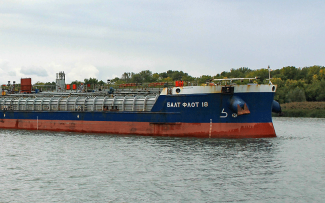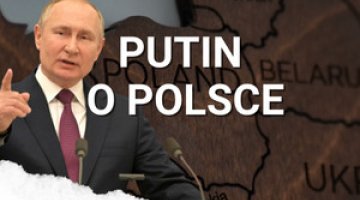Russia’s budget under pressure from low oil prices

Since the beginning of 2025, Russian oil exporters have faced difficulties that are negatively impacting the state’s oil and gas revenues. Sanctions, combined with a strong rouble and falling global oil prices, are increasingly intensifying pressure on the Russian Federation’s budget. Although total budget revenues in the first quarter of this year were higher than in the corresponding period last year, the growth rate fell short of the targets outlined in the 2025 budget plan.
At the same time, the Kremlin is continuing its expansionary fiscal policy, rapidly increasing public spending. This, in turn, is contributing to rising inflation and the need to maintain high interest rates, ultimately slowing economic growth. If low oil prices persist over the longer term, the authorities will be forced to implement spending cuts and tap into financial reserves.
A drop in oil prices
According to data from the Russian government, in Q1 2025 the average export price of oil – which serves as the basis for taxing the sector – amounted to $62.8 per barrel. Compared to the corresponding period in 2024, this represents a drop of more than $5, or approximately 8%. The sharpest decline was recorded in March, when the price of oil fell below $60 per barrel. Notably, the discount on Russian oil relative to the Western Brent benchmark widened – increasing from $10 in December 2024 to nearly $14 in March 2025.
The drop in oil prices in Q1 2025 was caused by several factors. Firstly, it was influenced by the strengthening effect of Western sanctions introduced through the ‘farewell’ package announced by the outgoing Joe Biden administration on 10 January. Under this decision, a record number of tankers were subjected to US restrictions, forcing exporters to reduce prices across all grades of Russian oil, including ESPO crude, which is priced higher than Urals and primarily destined for Asian markets. Previously, the ESPO prices had been less affected by Western sanctions, as exports from the Pacific port of Kozmino were significantly less reliant on Western companies than those from European ports. However, the imposition of restrictions on vessels servicing Kozmino led to an increase in the discount on ESPO from $2 at the beginning of January to $10 at the beginning of April.
Secondly, in Q1 2025, Russia exported less oil than during the same period in 2024 – approximately 4.6 million barrels per day, which was 300,000 barrels fewer per day than a year earlier. The reduction in export volumes was primarily due to the need to cut production as part of commitments to reduce output under the OPEC+ cartel agreements. Thirdly, global oil prices declined, creating an unfavourable environment for Russian exports. The average monthly price of the Western Brent benchmark fell by approximately 8% over the period – from $79 per barrel in January to $72 by March.
A further decline in the price of Russian oil occurred at the beginning of April 2025, triggered by two developments: the Trump administration’s introduction of ‘retaliatory’ tariffs on China and all US imports, and the OPEC+ decision to gradually increase production. However, the rise in production within the cartel is relatively modest, as the announced ‘additional’ volume is fairly small (411,000 barrels daily) and concerns only the voluntary cuts implemented by eight members (including Russia), while the decision itself remains subject to revision should the market outlook change. The impact of the US tariffs is much stronger, intensifying fears of a potential global recession, which could lead to a slowdown in economic activity and a reduction in demand for hydrocarbons. This has also affected oil prices, including those for Russian crude.
A strong rouble: another blow to the budget
The negative consequences of the decline in oil prices have been further exacerbated by the simultaneous strengthening of the rouble against the dollar. Since 12 February 2025, the exchange rate of the Russian currency has remained stronger than the average annual rate assumed in the 2025 budget.
This situation is primarily due to a growing surplus in the current account balance. Following the imposition of Western sanctions and Russia’s disconnection from foreign capital markets, foreign trade performance now exerts the greatest influence on the value of the rouble (rather than oil prices, as was the case prior to the invasion). In Q1 2025, with exports only slightly lower than a year earlier, imports recorded a sharp decline (in February, they were nearly 11% lower year-on-year; data for March is not yet available). This reduced the demand for foreign currencies, leading to their depreciation. The strengthening of the rouble was further supported by a shift in US policy towards Russia and the initiation of talks with the Kremlin, which improved investor sentiment – both among domestic investors and those foreign investors who continue to cooperate with Russia and its economic partners.
The monthly export price of Russian oil, which the government calculates in US dollars, forms the basis for taxing Russia’s domestic oil and gas sector. However, companies settle their tax obligations in roubles. Consequently, owing to the strengthening of the rouble, the value of tax liabilities measured in roubles is lower. The 2025 budget assumed an average annual export price of oil at $69.7 per barrel, equivalent to 6,726 roubles based on the exchange rate set by the government. Meanwhile, by the end of March 2025, the actual value had fallen below 5,000 roubles, and by mid-April it had dropped to 4,100 roubles – approximately 40% lower than the projected value. The declines recorded in March will only be reflected in the April budget results, when companies are due to pay their taxes.
A drop in the budget’s oil and gas revenues
Lower export prices for oil, combined with the strengthening of the rouble, have led to a decline in Russia’s oil and gas budget revenues. In February and March 2025, these revenues fell by over 18.5% and 17.2% year-on-year, respectively. Their total value for the entire first quarter – approximately 2.6 trillion roubles – was nearly 10% lower than in the corresponding period last year. However, it should be noted that revenues in Q1 2024 were exceptionally high. The amount generated in the first quarter represents 25% of the total oil and gas revenue target for 2025, set in the budget law at 10.6 trillion roubles. It is also worth noting that the decline in oil prices recorded in March will only be fully reflected in the state budget from April onwards.
According to the current fiscal rule, the government is allowed to use only the oil and gas revenues generated at an export price of $60 per barrel for ongoing expenditures. Any surplus revenue achieved when prices exceed this threshold must be allocated to reserves and accumulated in gold or yuan within the National Welfare Fund (NWF). In the event that oil prices fall below the baseline level, which occurred in March 2025, the resulting deficit is covered by drawing on the accumulated reserves.
Consequently, on 12 April 2025, for the first time since January 2024, the government began selling foreign currency from the National Welfare Fund (NWF) in order to cover the shortfall in oil and gas revenues with the roubles obtained. This move further increases the pressure on the Russian currency. Nevertheless, throughout the entire first quarter of this year, the Russian Federation was increasing its reserves, as the average export price of its oil remained above $60 per barrel. These funds will be transferred to the NWF with a significant delay. In the meantime, they are held in accounts at the central bank, which, on behalf of the government, uses them to purchase foreign currencies or gold.
Notably, three years after the start of the full-scale war, Russia’s liquid government reserves have significantly declined. They are now smaller than Russia’s 2024 budget deficit, which amounted to 3.5 trillion roubles, and are valued at approximately $39 billion at the current exchange rate. These reserves have been used not only to cover the deficits of previous years but also to finance numerous infrastructure projects and to support state-owned companies.
An increase in non-oil and gas revenues
In Q1 2025, revenues generated by other sectors of the economy continued to grow dynamically – by around 10% year-on-year. This increase is in line with the official inflation rate but still falls short of the 18% growth target set by the government for 2025 as a whole. This situation is primarily linked to additional financial burdens imposed on businesses and citizens, as the pace of economic activity has slowed considerably (for instance, industrial production growth dropped to 1.2% year-on-year, compared with over 6% a year earlier). For example, VAT revenues rose by 9.5% year-on-year, but since the beginning of the year, the list of VAT payers has been expanded and now includes self-employed individuals and those using simplified taxation schemes.
Consequently, Russia’s total budget revenues for Q1 2025 were 3.8% higher than in the corresponding period in 2024. However, in March, the increase was only marginal (approximately 0.3% year-on-year, compared with over 11% in January).
A dynamic increase in spending
In the first months of the year, the authorities once again rapidly increased budgetary spending, traditionally advancing funds to finance public procurement, primarily for defence contracts. This year, the growth rate of state expenditure in the first quarter was as high as 24.5% (compared with 20% a year earlier). Consequently, the government has already spent over 27% of the planned annual budget – a record high proportion for this period. Data from the electronic budget system (which tracks real-time financial flows) indicates that the high rate of expenditure growth (over 80% year-on-year) continued into the first week of April. Thus, the budget deficit for the first quarter exceeded the amount originally planned for the entire year by 1 trillion roubles.
Are spending cuts imminent?
The government is finding it increasingly challenging to finance the rapidly growing budget expenditures, which are mainly related to the war. Despite higher tax burdens, elevated inflation, and the rouble’s devaluation, the budget has consistently run at a deficit since the start of the full-scale war. This situation has forced the Kremlin to draw on reserves and increase public debt. The current decline in oil prices, combined with the slowdown in economic activity, is further intensifying the already significant pressure on the state’s finances.
For now, the authorities are managing to keep the situation under control, although in March the Russian Ministry of Finance admitted that the average export price of oil in 2025 could be approximately $60 per barrel instead of the nearly $70 assumed in the budget. Consequently, the budget deficit could expand by around 1% of GDP, equivalent to more than 2 trillion roubles.
Moreover, the indirect effects of Donald Trump’s protectionist policies and the trade war with China pose a serious threat to the global economy. Initial estimates already forecast a slowdown in global economic growth in 2025 (in April, the WTO revised its forecast down to 2.2%, from the previous 2.7%), which will impact demand for oil. For Russia, the situation in China is of particular importance, as it is currently Russia’s most significant economic partner and a major importer of Russian oil (in 2024, China accounted for half of Russia’s oil exports) A potential slowdown in China’s economic activity as a result of US tariffs could provoke a reduction in demand for oil, negatively affecting Russia’s foreign sales. In fact, Beijing has already been scaling back its imports of oil, coal, natural gas, and iron for several months.
If oil prices remain below $60 per barrel for an extended period, the government will likely be forced to implement spending cuts, mainly in areas unrelated to the war effort. The Kremlin is not prepared to exhaust its reserves entirely, as they currently serve as the main safeguard for budgetary stability. Moreover, with current very high interest rates (the base rate stands at 21%), borrowing on the market is also proving an inefficient option.
The accumulation of economic problems – both budgetary and related to the slowdown in growth – is fostering increased economic pressure on Russia from the West, particularly from the European Union, through further tightening and reinforcement of sanctions.





